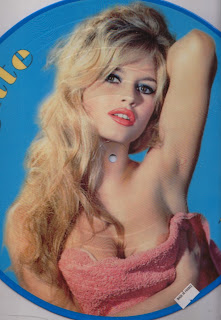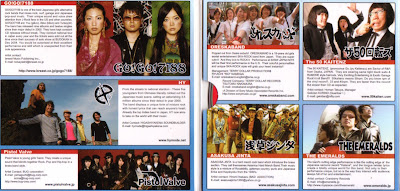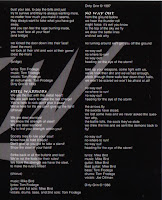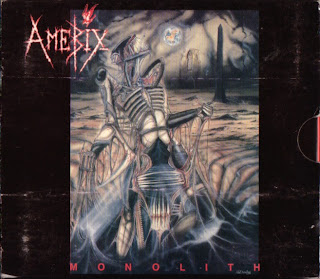
Dubbed as France's original "sex kitten" before the term came into wide use, Brigitte Bardot's acting career took the world by storm. World-renowned for her bleach-blonde hair, she became epitomized as "the kind of French girl most American men wanted to meet in Paris."
Although, her films were shown in the States, her lines were often dubbed due to her thick French accent which most American audiences found difficult to decipher. These movies also rarely fit into the American rating system for film and would only be shown if labeled as "European" due to differing standards regarding the use of nudity in film. Despite the difference in definitions of what was acceptable in the cinema, her kitsch roles met with much popularity.

Riding on the fame of her acting career, she broke into music in the early 1960s. Although, her early attempts at recording didn't yield the same response as they did once she teamed up with Serge Gainsbourg, there was enough kitsch value to keep the average music listener interested.
In the early 1970s, Bardot announced her retirement and devoted herself to the cause of animal rights at a period in time that the movement hadn't much popularity. She started the Fondation Brigitte Bardot for the welfare and protection of animals.
Although her devotion to this movement has won her comradery with youth who share a passion for animal rights issues, her marriage to a right wing activist has heaped much criticism onto her shoulders. Her most recent statements regarding the "underground and dangerous infiltration of Islam" in France hasn't helped change the perception that she has become anti-immigrant.
Her book Un Cri Dans Le Silence with its critical statements regarding homosexuality and Islam have led to many court cases on charges of inciting racial discrimination and contempt for those of homosexual persuasion. It's quite possible that when taken out of context, these statements could appear to be quite scurrilous but those who have read the book have asserted that, taken in its whole, they have not walked away from it thinking her to be racist or intolerant of homosexuality. There are no English translations of this text anywhere on the 'net, just vague and incomplete quotes that are supposed proof of her racist leanings. The text is only available online, presumably from Bardot herself, as it's uncertain that any publisher is currently printing copies due to the recent trials. If anyone can provide English translations of the book, it would be most appreciated.
It would be interesting to note the changes that occurred within her political mindscape as she began to age and her beauty started to wane. Perhaps it's her need to remain in the spotlight that causes her to act in ways that she knows will force people to listen to her since they no longer revere her for her youthful charm. No longer at the center of media attention, the feeling of being invisible begins to set in, hence the need for breaking the silence as the title of her book suggests.
Perhaps this is just something peculiar to those living in France? Josephine Baker went a similar route; at one time, decrying America for its wanton racial discrimination against blacks but later supporting the Italian invasion of the "Ethiopian barbarians." In hindsight, it's easy enough for most to see the glaring inconsistency in such a statement. Perhaps it's just that all of these interesting incongruencies begin to manifest once the fame wears off and celebrities find themselves faced with the same vulnerable flesh that all human beings have to adorn in daily life.
The collection posted here is a collection of her early EPs released in the 1960s. The vinyl recording included is from a beautiful picture disk released in France during the 1990s.
The Early Years Picture Disk
The Early Years Liner Notes


















































